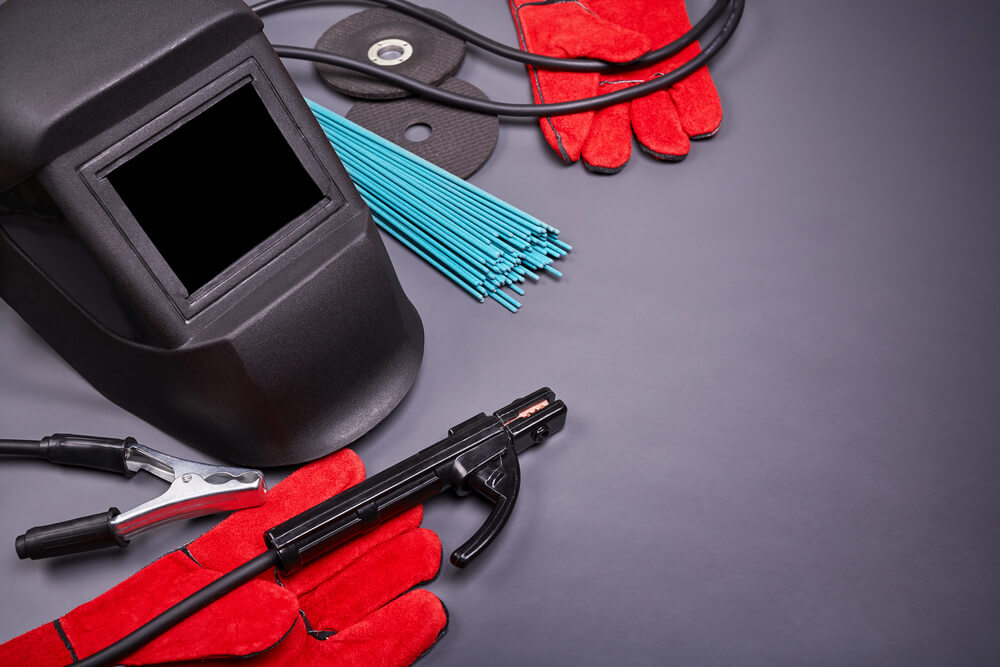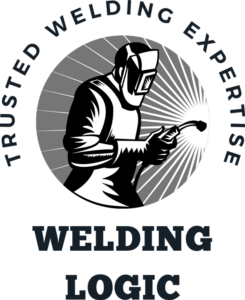Welding is a true skill that takes time to develop. You must train and practice welding with a variety of materials and different types of welding equipment to become well-rounded.
You could learn the basics of welding in a vocational school, community college, or by completing a welding apprenticeship. Once you have gained enough skills and experience, you could complete a state welding certificate that affirms your skills and knowledge.
Some important statistics and notes to consider:
- Welding is considered one of the most difficult skills to learn
- Approximately 60% of welding students drop out of training programs
- Welding is ranked as one of the most dangerous jobs in America
- OSHA reports that there are over 4,000 welding related injuries each year
- The American Welding Society reports that there are over 500 welding related fatalities each year
In this post we’ll go more into depth on a variety of considerations regarding how difficult welding is (and whether it may be right for you).
In This Article
Welding Uses Many Types of Equipment

Welding mostly consisted of arc welding or gas welding for many years. Movies and TV shows often depict a welder wearing a face shield with a very dark lens to protect your eyes and keep heat, slag, and hot sparks away from your face and hair, and long leather gloves protect your hands and wrists.
Most gas welders are depicted using a pair of welding goggles and gloves, but often with more gas than oxygen going to the torch to create a better visual effect than a neutral flame that is blue and controlled.
Arc welding uses an electrical current that passes through the welding rod and the metal upon which you are working. Gas welding usually requires a tank of oxygen and another of acetylene or another highly flammable gas.
Other types of welding also exist. A MiG or wire welding machine automatically feeds a thin metal wire to the weld and works similarly to arc welding.
You also might do TIG welding on lighter and more delicate metals, like aluminum. TIG welding does not cause as much widespread heat as the other types, which would cause the aluminum or other delicate metal to warp or suffer other types of damage.
Must Master Different Types of Welds
One of the most difficult aspects of welding is the many different types that exist. You need to learn many different types of welds and how to do them in different positions.
The various welds mostly include the:
- Lap joint
- Butt joint
- Tee joint
- Corner joint
- Edge joint
A lap joint occurs when two pieces of metal partly overlap each other. A butt joint occurs when those two pieces butt together.
A tee joint creates a 90-degree angle with the edge of one piece meeting the other in a more centered position. The result is a “T” formation that might be inverted, on its side, or standing up.
A corner joint joins two pieces of metal that are situated at a right angle with their edges joined by the weld. An edge joint occurs when two flat pieces are against one another and are welded at the seam created by their edges.
Have to Perform Welds in Multiple Positions
You need to know more than just how to lay the basic welds. The items that require welding sometimes will be located in a convenient and easy place to reach and weld.
More often than not, you will have to weld in more difficult positions. Learning to weld in the four basic positions is necessary to become a good welder.
The four positions in which you need to learn how to lay welds are:
- Flat
- Horizontal
- Vertical
- Overhead
An overhead weld is the most difficult because gravity will make the molten metal want to flow toward the ground. It also might drip onto you and burn your clothing or skin.
Horizontal and vertical welds also are affected by gravity. The effect on a horizontal weld might cause your weld to droop, while a vertical weld might be thicker and wider at the bottom than at the top.
The position of the weld also might be angled or change as you proceed, like when welding together two pieces of pipe that you cannot rotate.
Need to Know How to Prepare Metal for Welding
Laying good welds required prepping the metal. You will have to know how to shape the metal and possibly grind a bevel or groove in one or more pieces.
You must inspect the metal and work out any flaws that it might have. Those flaws could include uneven edges and slightly warped pieces that are not flat. Removing those defects by working the metal will help to create an ideal joint for welding.
You also need to clean the metal and remove any coatings that might interfere with the weld. Any grease, oil, or similar contaminants also need to go before you start welding the pieces.
Preheating metal will help to make it more pliable and make it easier to lay a good weld onto metal without causing warping, cracking, or improper penetration.
Is Welding Hard on the Body (Your Back & Eyes)?
Metal can be very heavy and have sharp edges that might cut and injure you. You need to have good strength to lift and hold pieces of metal while you are preparing it and when laying the weld.
The various positions that you need to weld might require you to lie on your back or side. You might have to climb a ladder or hoist a heavy piece of steel into place.
Welding requires focus, a steady hand, and good vision so that you can do it well. You need to be in good physical condition and able to work while in awkward and uncomfortable positions for extended periods of time.
Often Exposed to Extreme Heat and Possibly Weather
Welding often is not done in ideal work conditions. It could occur indoors in a controlled environment or outdoors where you are subject to the elements.
You might weld in extreme cold like those who built the Alaskan pipeline. You also might have to weld in hot outdoor conditions.
Many people even weld while underwater, which requires expert diving skills and special certification as an underwater welder.
Electric Shock and Other Potential Dangers
Danger is another factor that makes welding potentially hard to do.
You could suffer electrical shock or outright electrocution while arc welding in wet conditions. You might burn yourself from the heat.
Working with a heavy metal object might result in a crushing injury if it falls onto part of your body. If you do not protect your eyes with welding goggles or a face shield, you could damage the retina by looking at the extremely bright light created when laying a weld.
Underwater welding particularly has been rated as the most dangerous job statistically in America by some studies.
It is very important to know how to work safely when you are welding and to wear the right types of safety equipment to protect against injury or death.
Frequently Asked Questions
Additional Sources & Resources
- https://www.thebalancesmb.com/how-difficult-is-welding-to-learn-2878525
- https://www.thebalancecareers.com/top-10-most-dangerous-jobs-in-america-2063781
- https://www.osha.gov/pls/oshaweb/owadisp.show_document?p_table=NEWS_RELEASES&p_id=23069
- https://www.aws.org/foundation/newsroom/welding-safety-statistics/

